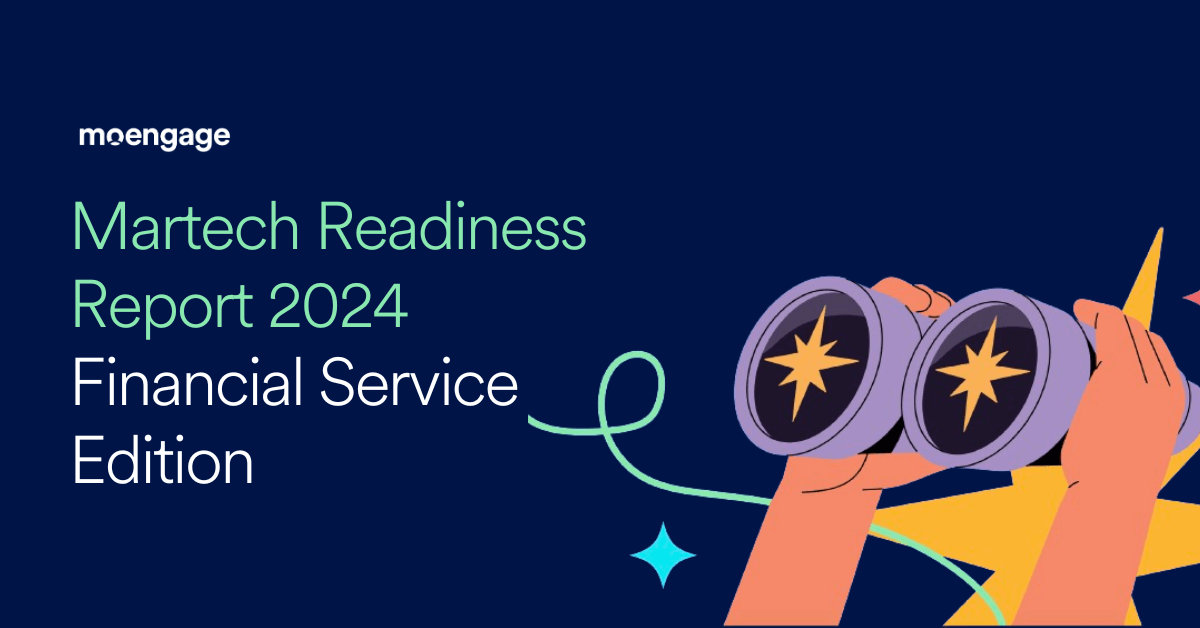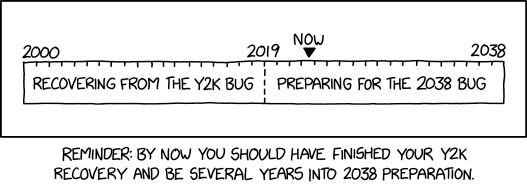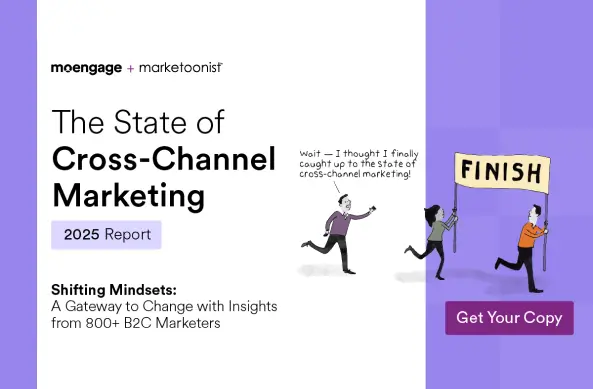Martech Readiness Report 2025: How Ready Is Your Financial Service Brand to Meet Customer Expectations?

Reading Time: 6 minutes
Leaders in the financial service industry stand at the crossroads between innovation and tradition. There is an increased need for personalized services and increased scrutiny from regulatory bodies.
Financial brands can ace customer engagement in this period of a ‘great banking transition’ only by doubling their preparedness.
Recovering from the pandemic to being ready to thrive in the ‘Great Banking Transition’ era 

About the Survey
At MoEngage, we embarked on a journey where we surveyed global leaders, decision-makers, and influencers from the financial service industry to understand how prepared they are to meet their customers’ ever-evolving expectations and demands.
The surveyed executives know that consumer behavior and expectations are rapidly evolving. They rate speed and agility as the golden tickets to help them respond effectively to changing consumer expectations.
However, the path toward effective customer engagement is filled with challenges that make them unprepared to face these changes.
This article will explore the survey’s findings, how financial brands can thrive during the ‘great transition,’ and what an agile, security-first martech stack should look like.
Let’s get started.
Our Audience
Roles: We interviewed individuals from mid- and senior levels in the financial service industry, including C-level executives, Directors, Middle and Senior Management, and Team/ Functional Leaders. Respondents’ domains of expertise were marketing, growth, and product.
Organization Size: 48.5% of respondents represent organizations with 500-1000 employees, while 51.4% represent organizations with 1001-5000 employees.
Countries Included in the Survey: Australia, Brazil, Canada, Germany, India, Indonesia, Mexico, Philippines, Saudi Arabia, United Arab Emirates, United Kingdom, United States of America
Financial Service Brands Understand that Customer Expectations are Rapidly Evolving
60% of senior executives in the financial service industry agreed that consumer behavior, preferences, likes, and expectations are evolving rapidly. Technological advancements in automation and AI, as well as increased cyber risks, are some factors that influence the rapid evolution of consumer behavior and preferences.
Financial institutions must deliver value beyond their core products or services (like loan disbursement, opening a fixed deposit, or setting up a mutual fund) to stand out from their competition. This value can only be delivered through agile, seamless, personalized, and, most importantly, trusted customer experiences.
Financial Brands Trust that They Have the Right Talent Pool to Adapt to These Changes
55% of leaders in financial service brands agree that their teams have the right skills and knowledge to engage customers in a rapidly evolving digital world.
These leaders deemed adaptability (24.5%), customer-centricity (23.1%), and agility (18.4%) to be the top skills in 2025. Adaptability means analyzing campaign results, iterating faster, and constantly improving. Customer-centricity means understanding data and acting on the insights, and agility means rapidly ideating and engaging with customers based on insights.

Financial Services Brands Do Not Feel Empowered By Their Current Martech Stack to Adapt to These Changes
47.2% of senior executives in the financial service industry felt they were not well prepared to adapt to evolving customer expectations.
There is a disconnect between the level of awareness regarding evolving customer expectations and the level of preparedness needed.

What causes this ‘disconnect’? Read below to find out.
What Does The Current Martech Stack Look Like
62.9% of financial services enterprise brands use a legacy platform such as Salesforce Marketing Cloud, Adobe Experience/Campaign Manager, or Oracle Responsys to manage marketing automation and cross-channel customer engagement.

In the true sense, these legacy platforms are not customer engagement platforms (CEP). Starting as email marketing platforms, they have, over time, added other channel capabilities like push, in-app, web push notifications, WhatsApp, etc. However, they lack true omnichannel capabilities and fail to build seamless customer experiences, hampering enterprise brands’ agility and adaptability skills.
Financial Service Brands Understand The Importance of Agility
Senior executives globally agree that agility is significant from an efficiency perspective and a non-negotiable for boosting revenue and ROI.
The perceived impact of agility is as follows:
- 20.2% of senior leaders in the financial service industry feel that being agile helps them stay ahead of the competition.
- 18.1% of senior leaders in the financial service industry feel that being agile can improve customer stickiness and loyalty.
- 13.2% of senior leaders in the financial service industry believe they can reduce bloat in their martech stack and use allocated budgets more efficiently.
Financial Brands Feel Unsupported When It Comes to Speed and Agility
68.6% of senior executives in the financial service industry agree that speed and agility are important to understanding the pulse of their customers and responding in accordance.
However, 57.2% of Directors and Senior Management Employees do not strongly feel they have enough support to be agile and adaptable.
But why this might be the case?
One cause is the heavy dependency on outdated, clunky martech tools and platforms, which aren’t purpose-built to understand the industry’s unique security and agility needs. Another cause is the redundant workflows built to manage task requests in their legacy systems.
48.6% of senior executives in the financial service industry do not strongly feel that organizational processes and workflows enable them to react fast and adapt quickly to evolving customer expectations.
Existing workflows and SLAs are not conducive to financial service brands’ growth. Growth in 2025 for financial service brands is directly related to the perceived positive customer experience.
Financial service brands need to be agile and fast to meet customer expectations.
Redundant workflows, long SLAs, and extreme dependencies on agencies and consultants often stand in the way between brands and customers.
With one in two senior executives stating that existing workflows and processes don’t enable them to react quickly and adapt quickly, the status quo needs to change.
Financial Service Brands Take A Month Per Campaign
42.8% of financial service enterprise brands take over four weeks to launch a cross-channel customer engagement campaign. Conversely, 5.7% can go live with a new campaign in under a week.

Regarding reporting, financial enterprise brands seem to have a tough time. 58.6% of financial service enterprise brands take over 2 weeks to gather data and insights into customer behavior, preferences, likes, journeys, and expectations with their current martech stack. The percentage of enterprise brands that take less than a week is just 14.3%.
Even when it comes to understanding the performance of a single campaign, financial service brands take over 2 weeks to gather data and insights about campaign performances such as reach, clicks, conversions, channel effectiveness, or attribution with their current martech stack. Only 15.8% of financial service brands can gather this data within a week.
Financial Service Brands are Dissatisfied with their Current Tech Stack
Financial service brands unanimously agree that their current tools and vendors don’t empower them to meet evolving customer expectations.
65.7% of senior executives in financial service brands are unsatisfied with their current martech stack and vendors.

Conclusion
While enterprise financial service brands understand that consumer behavior is changing rapidly, agility is the need of the hour, and they are equipped with the right teams and skills, their current stack is anchoring them down.
Their current bloated and inefficient martech hampers their agility and scalability by slowing down campaign velocity and increasing the time to engage customers with the right message across the right channel at the right time.
And what’s the business impact? There is a loss of competitive edge, poor customer stickiness, and low loyalty.
It’s high time that financial service enterprise brands let go of outdated, clunky tech stacks. Financial service brands need a modern Customer Engagement Platform (CEP) in their martech stack. They need a unified, agile, secure, and versatile platform built specifically for them.
Financial service enterprise brands need MoEngage.
Want to know how ‘MoEngage for Financial Services’ can help accelerate your brand’s growth and digital transformation? Talk to our financial services expert here.
Related Reading:
- Your One-Stop Shop To All Resources Related to Financial Services
- Keep Customer Data Confidential with PII Masking
- Website Personalization For BFSI Brands: How To Tailor Personalized Financial Web Experiences For Customers
- How Banks Can Use Customer Engagement Platforms to Improve LTV and CX While Reducing Costs in a Secure Environment
 [Panel] Personalization, AI, Trust—What Top BFSI Marketers Are Doing Differently.
[Panel] Personalization, AI, Trust—What Top BFSI Marketers Are Doing Differently. 





